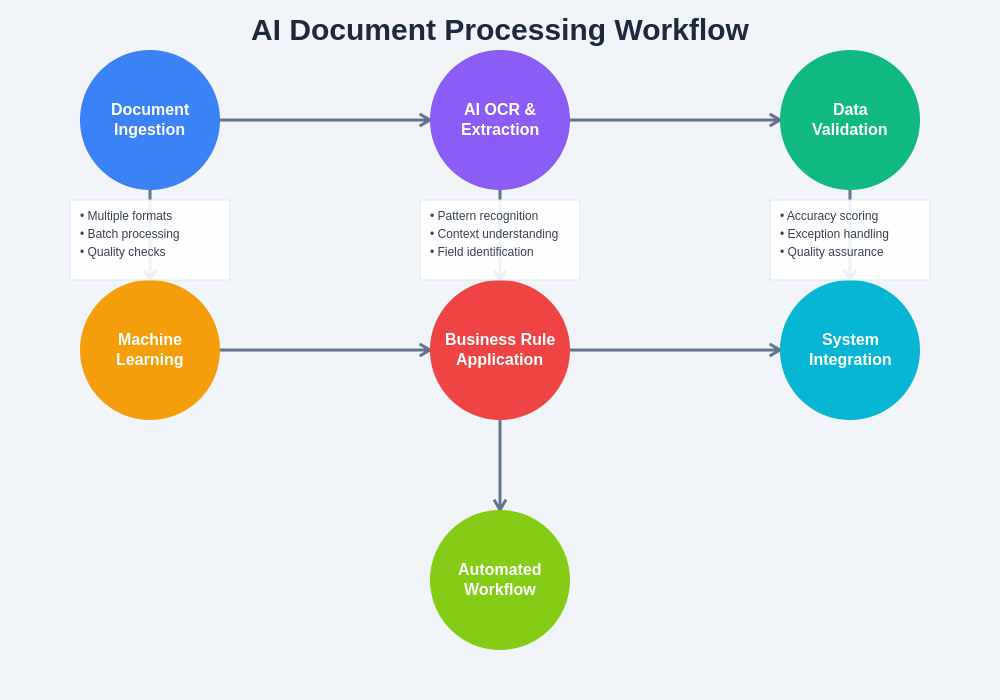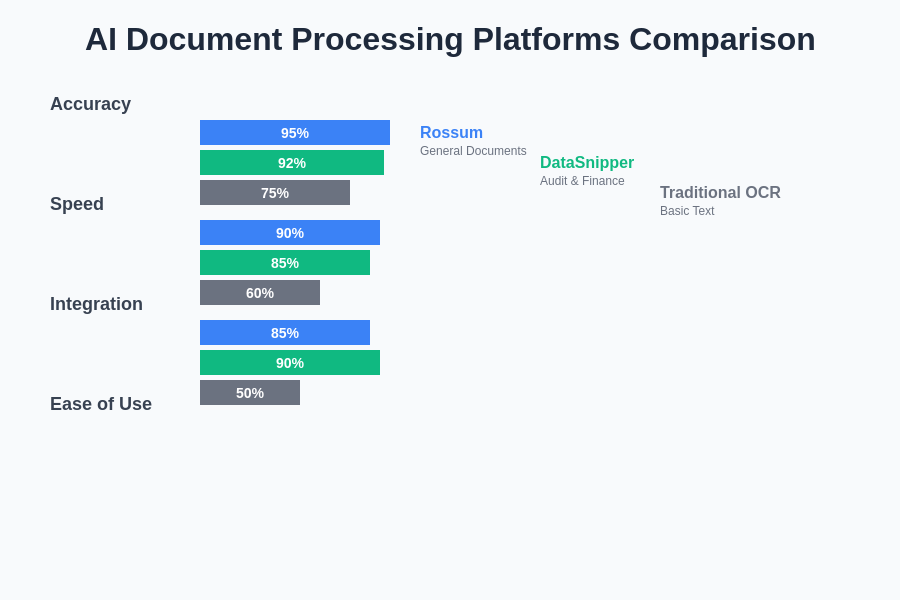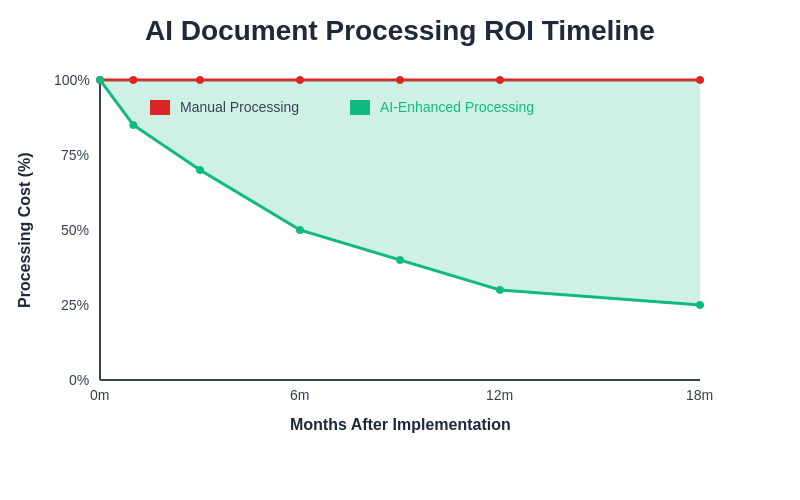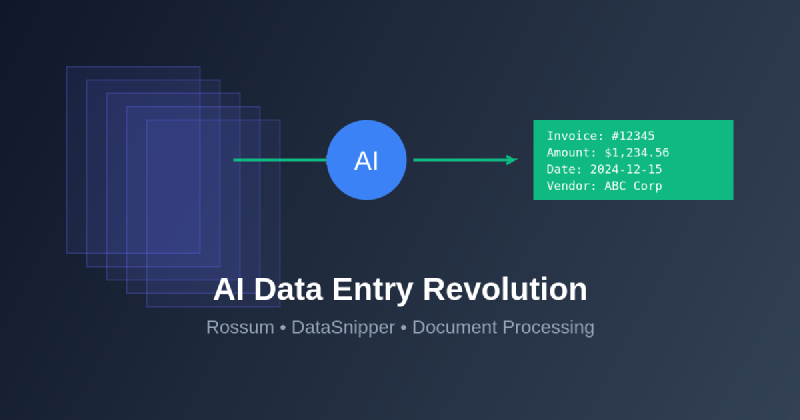The modern business landscape has witnessed a revolutionary transformation in how organizations handle document processing and data extraction tasks through the integration of artificial intelligence-powered solutions. Traditional manual data entry processes, which once consumed countless hours and resources while remaining prone to human error, have evolved into sophisticated automated systems capable of processing vast quantities of documents with unprecedented accuracy and speed. This technological advancement has fundamentally altered operational workflows across industries, enabling businesses to redirect human resources toward more strategic initiatives while maintaining superior data quality and processing efficiency.
Explore the latest AI automation trends to understand how cutting-edge technologies are reshaping business operations and creating new opportunities for organizational efficiency and growth. The emergence of specialized AI platforms for document processing represents a paradigm shift that extends far beyond simple optical character recognition, incorporating advanced machine learning algorithms that can understand context, validate information, and integrate seamlessly with existing business systems.
The Evolution of Document Processing Technology
The journey from manual data entry to AI-powered document processing represents one of the most significant technological leaps in modern business automation. Traditional approaches to document processing required substantial human intervention, involving tedious manual extraction of information from invoices, receipts, contracts, and other business documents. These processes were not only time-consuming but also inherently susceptible to errors, inconsistencies, and bottlenecks that could significantly impact operational efficiency and decision-making capabilities.
The introduction of artificial intelligence into document processing workflows has fundamentally transformed this landscape by introducing sophisticated algorithms capable of understanding document structure, extracting relevant information with high precision, and learning from processing patterns to continuously improve accuracy. Modern AI-powered solutions can process multiple document types simultaneously, handle variations in formatting and layout, and maintain consistent quality standards regardless of document complexity or volume fluctuations.
Rossum: Pioneering Intelligent Document Processing
Rossum has emerged as a leading force in the intelligent document processing space, leveraging advanced machine learning algorithms and computer vision technology to automate the extraction and processing of structured and semi-structured documents. The platform represents a comprehensive solution that goes beyond traditional optical character recognition by incorporating contextual understanding, data validation, and intelligent workflow management capabilities that significantly enhance processing accuracy and operational efficiency.
The sophisticated architecture underlying Rossum’s platform enables organizations to handle diverse document types with remarkable precision, from standard invoices and purchase orders to complex contracts and compliance documents. The system’s ability to learn from user corrections and feedback creates a continuously improving processing environment that becomes more accurate and efficient over time, reducing the need for manual intervention while maintaining high standards of data quality and reliability.
Experience advanced AI capabilities with Claude to enhance your document processing workflows and discover how intelligent automation can transform your organization’s operational efficiency. The integration of multiple AI technologies creates a powerful ecosystem that supports comprehensive document management and data extraction requirements across various business contexts and industry verticals.
DataSnipper: Revolutionizing Audit and Financial Document Analysis
DataSnipper has carved out a distinctive niche in the document processing landscape by focusing specifically on audit and financial document analysis, providing specialized tools that address the unique challenges faced by accounting professionals, auditors, and financial analysts. The platform combines artificial intelligence with domain-specific expertise to create solutions that understand the intricacies of financial documentation, regulatory requirements, and audit trail maintenance while streamlining complex analytical processes.
The platform’s intelligent approach to financial document processing incorporates advanced pattern recognition capabilities that can identify relevant financial data points, cross-reference information across multiple documents, and flag potential discrepancies or anomalies that require further investigation. This specialized focus enables DataSnipper to provide highly accurate and contextually relevant results that align with professional accounting standards and regulatory compliance requirements.
Advanced OCR and Machine Learning Integration
The foundation of modern AI-powered document processing lies in the sophisticated integration of optical character recognition technology with advanced machine learning algorithms that can understand context, structure, and relationships within documents. Contemporary OCR solutions have evolved far beyond simple character recognition to incorporate intelligent document understanding capabilities that can interpret layout, identify key data fields, and maintain accuracy even when dealing with poor-quality scans or complex formatting variations.
Machine learning integration enables these systems to continuously improve their performance through exposure to diverse document types and processing scenarios. The algorithms learn to recognize patterns, understand contextual relationships between data elements, and adapt to variations in document formatting and structure. This adaptive capability ensures that processing accuracy improves over time while reducing the need for manual configuration and maintenance activities.

The comprehensive workflow demonstrates how modern AI-powered document processing integrates multiple technologies and validation steps to ensure accurate, efficient, and reliable data extraction from diverse document types while maintaining quality standards throughout the entire processing pipeline.
Workflow Automation and Business Process Integration
Modern AI-powered document processing solutions extend beyond simple data extraction to provide comprehensive workflow automation capabilities that integrate seamlessly with existing business systems and processes. These platforms can automatically route processed documents through approval workflows, trigger downstream business processes, and maintain detailed audit trails that support compliance requirements and operational transparency.
The integration capabilities of platforms like Rossum and DataSnipper enable organizations to create end-to-end automated workflows that span multiple business systems and departments. Documents can be automatically classified, processed, validated, and distributed to appropriate stakeholders while maintaining complete visibility into processing status and any exceptions that require manual attention. This comprehensive approach to workflow automation significantly reduces processing time while improving accuracy and consistency across organizational operations.
Accuracy and Quality Assurance Mechanisms
Quality assurance represents a critical component of AI-powered document processing systems, with sophisticated validation mechanisms that ensure processed data meets organizational standards and regulatory requirements. Advanced AI platforms incorporate multiple layers of validation, including format checking, cross-field validation, and anomaly detection algorithms that can identify potential errors or inconsistencies before they impact downstream business processes.
The validation mechanisms employed by leading platforms combine rule-based checking with machine learning-powered anomaly detection to create comprehensive quality assurance frameworks. These systems can identify unusual patterns, flag potential errors for human review, and maintain detailed confidence scores for processed data elements. This multi-layered approach to quality assurance ensures that automated processing maintains the high standards of accuracy required for critical business operations while minimizing the risk of processing errors.
Enhance your research capabilities with Perplexity to stay informed about the latest developments in AI document processing and discover how emerging technologies can further improve your organizational workflows and operational efficiency. The continuous evolution of AI technologies creates new opportunities for enhancing document processing capabilities and expanding automation possibilities.
Industry-Specific Applications and Use Cases
The versatility of AI-powered document processing enables specialized applications across diverse industry verticals, each with unique requirements and challenges that benefit from tailored automation solutions. Financial services organizations utilize these platforms for processing loan applications, insurance claims, and compliance documentation, while healthcare institutions leverage AI automation for patient records, insurance processing, and regulatory reporting requirements.
Manufacturing and supply chain organizations benefit from automated processing of purchase orders, invoices, and shipping documentation, enabling real-time visibility into operational metrics and financial performance. Professional services firms utilize specialized tools like DataSnipper for audit documentation, financial analysis, and client reporting workflows that require high levels of accuracy and regulatory compliance.

The comparative analysis reveals distinct strengths and specializations among leading AI document processing platforms, with each solution optimized for specific use cases and industry requirements while maintaining high performance standards across core functionality metrics.
Implementation Strategies and Best Practices
Successful implementation of AI-powered document processing solutions requires careful planning, stakeholder engagement, and systematic approach to change management that ensures smooth transition from existing processes to automated workflows. Organizations must evaluate their current document processing requirements, identify high-value automation opportunities, and develop comprehensive implementation plans that address technical integration, user training, and process optimization requirements.
The implementation process typically involves document type analysis, system configuration, integration development, and user training activities that ensure successful adoption and maximum return on investment. Leading organizations approach implementation as an iterative process, starting with high-volume, standardized document types before expanding to more complex processing scenarios as user expertise and system capabilities mature.
Cost-Benefit Analysis and ROI Considerations
The financial impact of implementing AI-powered document processing solutions extends beyond simple labor cost savings to encompass improvements in processing speed, accuracy, compliance, and strategic resource allocation that create substantial value for organizations. Comprehensive cost-benefit analysis must consider direct savings from reduced manual processing requirements alongside indirect benefits such as improved data quality, faster decision-making, and enhanced compliance capabilities.
Return on investment calculations should account for implementation costs, ongoing operational expenses, and the value created through improved processing efficiency, reduced error rates, and enhanced scalability. Many organizations realize significant returns within the first year of implementation, with benefits continuing to grow as processing volumes increase and system capabilities expand through machine learning improvements.

The financial trajectory illustrates the compelling value proposition of AI document processing implementation, demonstrating how initial investment costs are quickly offset by operational savings that accelerate over time as system efficiency and automation capabilities mature.
Integration with Enterprise Systems
Modern document processing solutions provide extensive integration capabilities that enable seamless connectivity with existing enterprise resource planning systems, customer relationship management platforms, and specialized business applications. These integrations ensure that processed data flows directly into appropriate business systems without requiring manual intervention or data transformation activities that could introduce errors or delays.
API-based integration architectures enable organizations to create sophisticated automated workflows that span multiple systems and business processes. Document processing platforms can trigger downstream activities, update relevant databases, and generate notifications or reports that keep stakeholders informed about processing status and any exceptions requiring attention. This comprehensive integration approach maximizes the value of document processing automation while minimizing disruption to existing business operations.
Security and Compliance Considerations
Security and compliance represent paramount concerns for organizations implementing AI-powered document processing solutions, particularly when handling sensitive financial, personal, or regulatory information that requires strict data protection measures. Leading platforms incorporate enterprise-grade security features including encryption, access controls, audit logging, and compliance frameworks that align with industry standards and regulatory requirements.
Comprehensive security architectures protect data throughout the processing lifecycle, from initial document ingestion through final data delivery and archival. Advanced platforms provide detailed audit trails that support compliance reporting and regulatory examinations while maintaining the confidentiality and integrity of processed information. These security measures ensure that organizations can leverage AI automation benefits without compromising their data protection obligations or regulatory compliance requirements.
Performance Monitoring and Optimization
Continuous performance monitoring and optimization represent essential components of successful AI-powered document processing implementations, enabling organizations to identify improvement opportunities, track processing metrics, and optimize system configurations for maximum efficiency and accuracy. Advanced monitoring capabilities provide real-time visibility into processing performance, error rates, and system utilization patterns that support proactive management and optimization activities.
Performance optimization involves ongoing analysis of processing patterns, identification of bottlenecks or inefficiencies, and systematic improvements to system configuration and workflow design. Leading platforms provide comprehensive analytics and reporting capabilities that enable organizations to track key performance indicators, identify trends, and make data-driven decisions about system enhancements and process improvements.
Future Developments and Technology Trends
The future of AI-powered document processing continues to evolve rapidly, with emerging technologies such as natural language processing, computer vision advances, and generative AI creating new possibilities for intelligent automation and document understanding capabilities. These technological developments promise to further expand the scope and accuracy of automated document processing while reducing implementation complexity and maintenance requirements.
Emerging trends include enhanced multilingual processing capabilities, improved handling of unstructured documents, and advanced analytics features that provide deeper insights into document content and processing patterns. The integration of generative AI technologies may enable more sophisticated document creation, summarization, and analysis capabilities that extend beyond traditional data extraction to provide comprehensive document intelligence and business insights.
The continued advancement of AI technologies, combined with increasing demand for operational efficiency and digital transformation initiatives, positions intelligent document processing as a critical capability for organizations seeking to maintain competitive advantage in an increasingly digital business environment. The evolution of these technologies will continue to expand automation possibilities while improving accuracy, reducing costs, and enabling new applications that transform how organizations handle document-intensive business processes.
Disclaimer
This article is for informational purposes only and does not constitute professional advice regarding AI implementation, document processing solutions, or business automation strategies. The views expressed are based on current understanding of AI technologies and their applications in document processing workflows. Readers should conduct their own research and consult with appropriate professionals when evaluating and implementing AI-powered document processing solutions. The effectiveness and suitability of specific platforms may vary depending on organizational requirements, document types, and implementation approaches.
